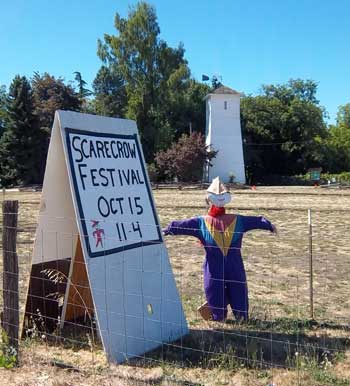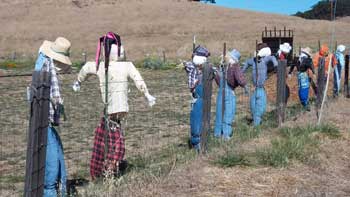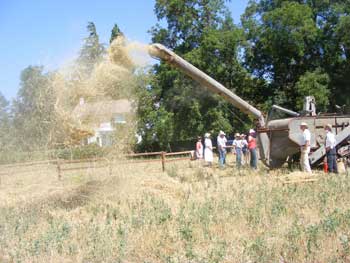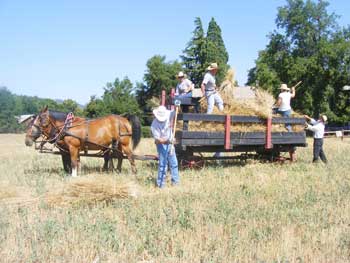Focus on the Farm – Pamela Sasseen, Hanley Farm Volunteer
At last, Mother Nature cooperated and threshing has been completed at the farm! Did you have the opportunity to come and watch as the Hanley team threshed the wheat? In theory, using Hanley Farm’s newer model mechanized thresher, threshing is a relatively simple task. But those of you who watched the whole threshing process know differently! It took hard work from several members of the Historical Farming Committee to get it done. First, the shocks are gathered and loaded into the horse-drawn wagon. Then the hay is manually taken from the wagon and placed on the threshing machine’s conveyor belt. At this point, mechanization takes over and the belt, which is powered by a John Deere tractor, conveys the straw into the thresher where it’s separated. The straw is blown out one blower pipe, and the grain from another blower pipe. This whole process is consistently monitored for proper operation and safety. At Hanley Farm, we use a 1900s era thresher and, while it’s labor intensive, it’s still more efficient than it was in the 1800s! At that time, it could take a farmer close to half a day to harvest one bushel of wheat!
I learned that the original threshing machine was invented in the late 1700s by Andrew Meikle, a Scottish mechanical engineer. As time progressed, the process was mechanized, so much so that in the UK, in 1830, laborers rioted as fewer men were needed to tend the crops! The Pitts brothers developed the first US threshing machine in 1837. However, John Nichols and David Shepard, founders of the Nichols & Shepard Company, improved upon the brothers’ design and, in 1900, introduced their “Red River Special” line of threshers. In 1929 they merged with the Oliver Company. The thresher in use at Hanley farm is a product of that merger, the “OliverTM Red River Special”!
An aside here, I enthusiastically took pictures of the thresher in action, and I wanted to get the perfect action shot. So I stood where the chaff is blown out of the blower pipe, made sure the lighting was just so, held the camera at the ideal angle, and waited for the action to start. Well, I was a tad off with my distancing. Turns out I was directly under the blower pipe and I was buried under the stalks and husks! I did, however, get my action shot.
 We’re very excited about what we have planned for you in October. If you attended Hanley Farm’s Scarecrow-making Workshops in September, or even if you didn’t, then you’re ready to participate in our special October 15 event. You should all be prepared to be surprised! Scarecrows are coming! Scary Ghosts & Goblins may be headed your way. Maybe the field will be haunted? You think? Call to learn more, if you dare! 541-773-2675. www.sohs.org/properties/hanley-farm
We’re very excited about what we have planned for you in October. If you attended Hanley Farm’s Scarecrow-making Workshops in September, or even if you didn’t, then you’re ready to participate in our special October 15 event. You should all be prepared to be surprised! Scarecrows are coming! Scary Ghosts & Goblins may be headed your way. Maybe the field will be haunted? You think? Call to learn more, if you dare! 541-773-2675. www.sohs.org/properties/hanley-farm
 For more information about Hanley Farm or upcoming events, call us at 541-773-2675; e-mail us at hanleyfarm@sohs.org; visit us on-line at www.sohs.org/properties/hanley-farm; or check out our Hanley Farm Facebook page!
For more information about Hanley Farm or upcoming events, call us at 541-773-2675; e-mail us at hanleyfarm@sohs.org; visit us on-line at www.sohs.org/properties/hanley-farm; or check out our Hanley Farm Facebook page!
Hanley Farm, owned and operated by the Southern Oregon Historical Society, is located at 1053 Hanley Road, between Jacksonville and Central Point.



